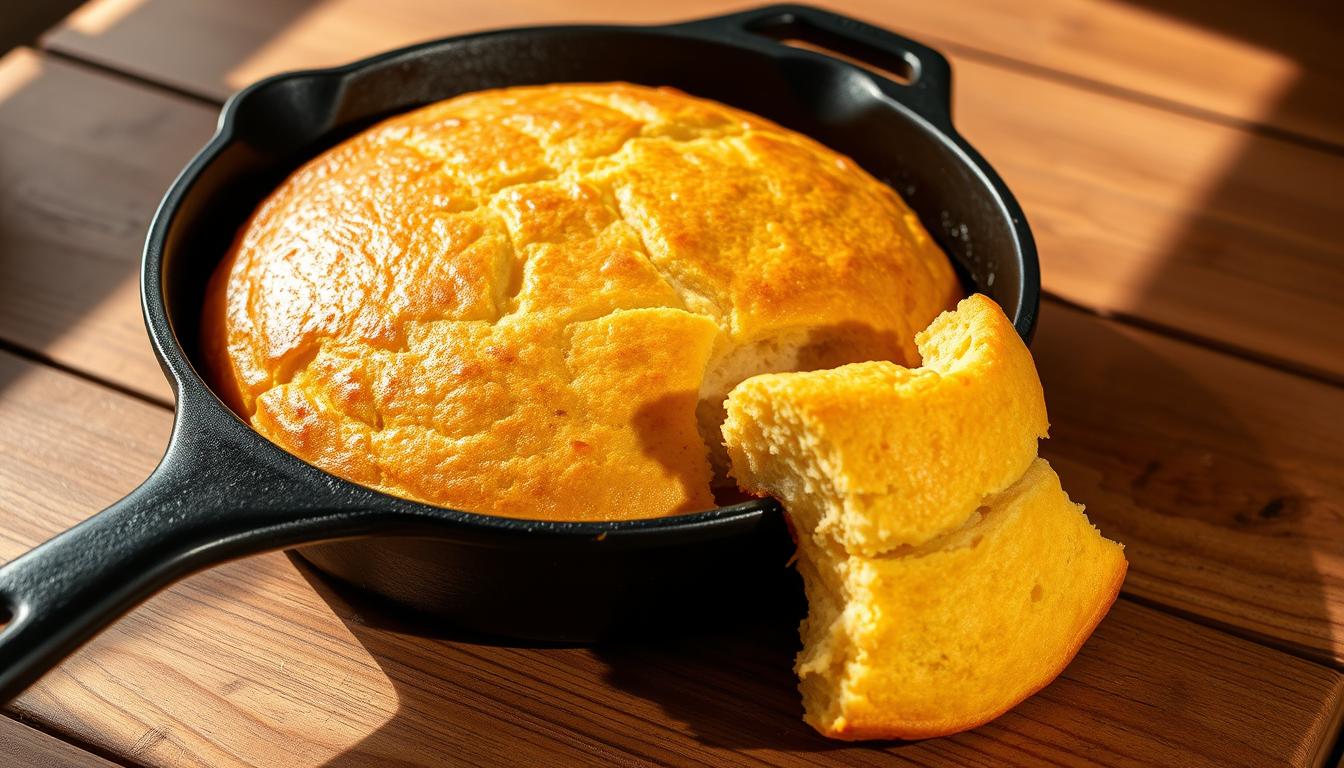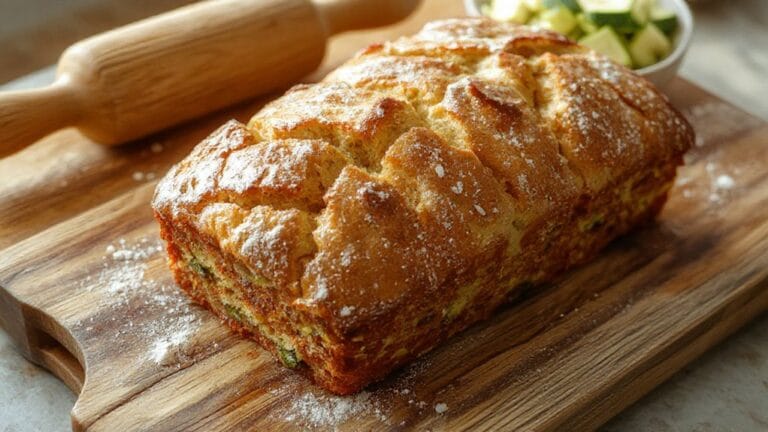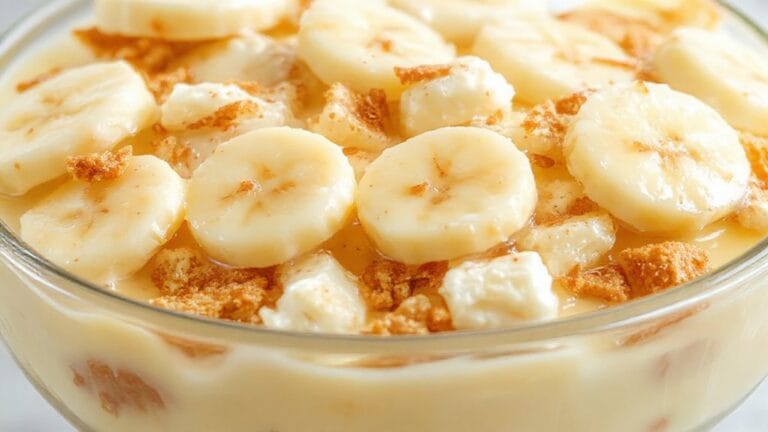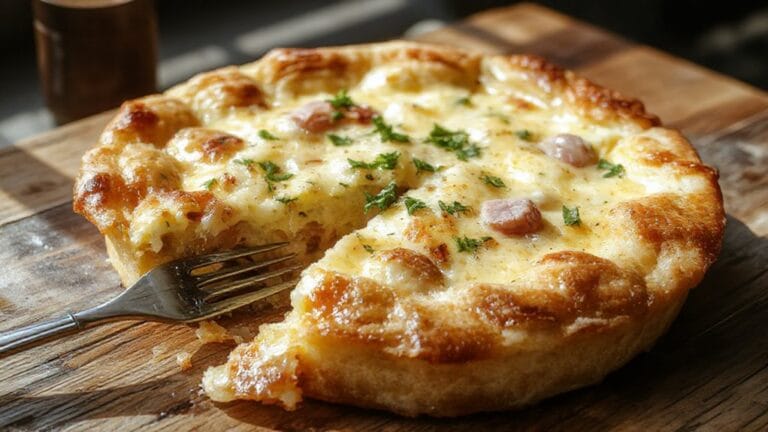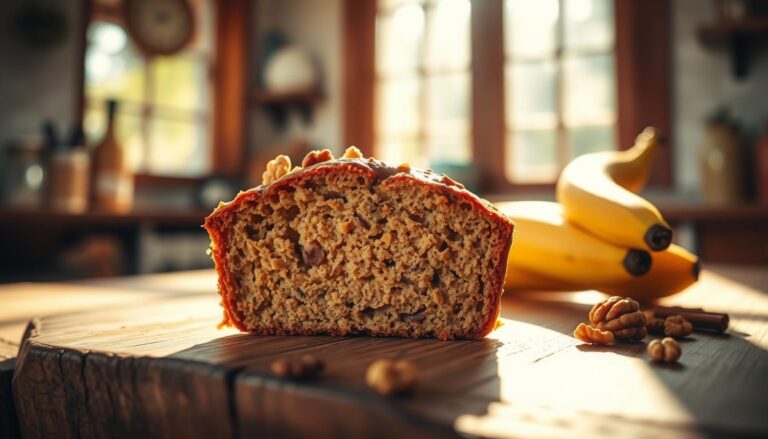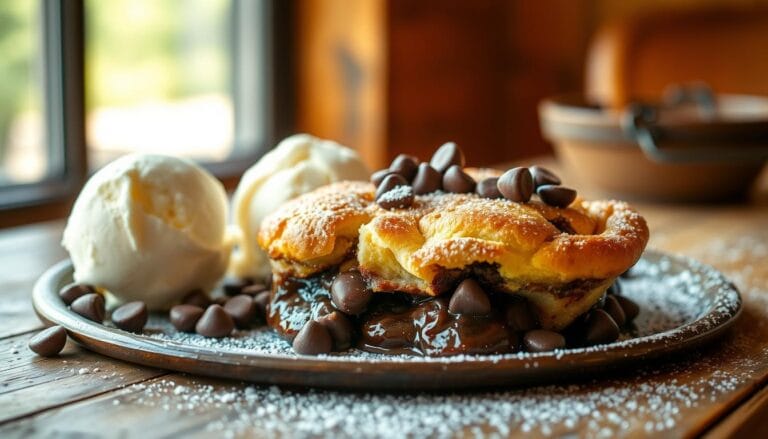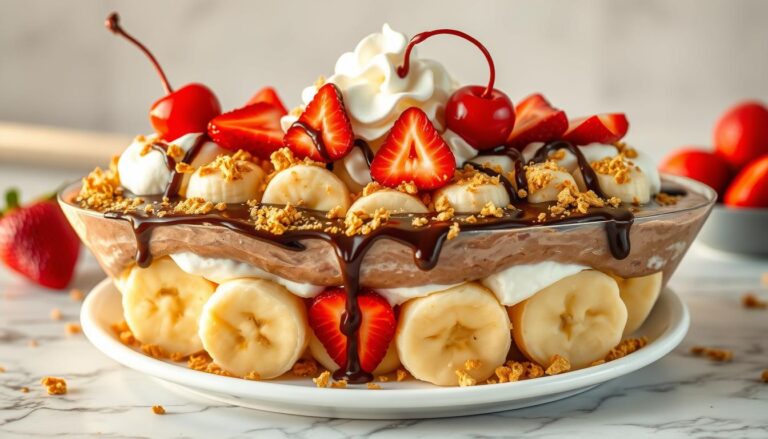Hoe cake bread vs. cornbread
Imagine waking up to the smell of golden batter sizzling on a cast-iron griddle. That’s how my journey into Southern breakfast culture began. I was sitting at a sunlit diner counter in Alabama, watching a cook flip a thin, crispy disk of cornmeal.
Locals called it “hoe cake bread.” At first, it looked like pancake’s rustic cousin. But one bite revealed a story deeper than its humble appearance.

This wasn’t just breakfast. It was a gateway to understanding hoe cakes and cornbread. Hoe cakes, with their crisp edges and portable simplicity, felt like frontier food reborn. Cornbread, dense and crumbly, whispered of family gatherings and cast-iron skillets passed through generations.
You’ve likely tasted cornbread’s comforting sweetness. But have you experienced the versatility of hoe cakes? These unassuming rounds transform with every meal—paired with collard greens at dinner or drizzled with syrup at dawn.
Their shared ingredient list hides centuries of culinary evolution. From Native American traditions to Civil War survival food.
As we explore their histories and kitchen secrets, you’ll discover why these cornmeal cousins inspire such loyalty. Which one claims your plate might depend on whether you crave crunch or crumb, tradition or adaptability. Let’s dig in.
Table of Contents
The Historical Roots of Both Staples
Cornbread and hoe cakes have deep roots in America’s history. They show how people used simple grains to create lasting foods. These dishes have survived by changing and being needed.
Native American Origins of Cornbread
Before Europeans came, Native Americans were experts at cooking with corn. The Pawtuxet tribe made ashcake from cornmeal and water, baked in ashes. This early cornbread helped settlers at Plymouth survive harsh winters.
By the 1700s, cornbread became a staple of the frontier. Appalachian settlers called it “the bread that built the West”. It was made without wheat flour, which was a big help in remote areas.
Hoe Cakes’ Connection to Enslaved Cooks
Enslaved Africans made hoe cakes in tough times. They cooked batter on field hoes over fires. This resourceful cooking style became a part of their culture.
Three things made early hoe cakes special:
- They were easy to carry for field workers
- They needed just cornmeal, water, and salt
- They cooked quickly without an oven
Shared Agricultural Heritage
Both foods come from the Columbian Exchange. Corn replaced European grains in colonial farming. It was:
- Drought-resistant
- High-yield
- Great for milling
This shared start explains why hoe cakes and cornbread spread everywhere. From Cherokee communities to Southern plantations, corn helped America grow. It did so, one golden slice at a time.
Defining the Contenders
Let’s look at what makes cornbread and hoe cakes different. They both come from cornmeal but are made in different ways. We’ll see what makes them unique.
What Exactly Is Cornbread?
Cornbread is made from simple things. It uses cornmeal instead of wheat flour. It has eggs, milk, and special helpers to make it rise.
Traditional Cornbread Characteristics
Leavened structure makes classic cornbread special. It gets a rise from baking powder or soda. This makes it light and fluffy.
You can bake it in:
- Cast-iron skillets for crispy edges
- Square pans for easy portioning
- Muffin tins for single-serving sizes
“The sweet aroma of freshly baked cornbread perfumed every frontier kitchen.”
Washington Irving, 1809
What Makes Hoe Cake Bread Unique?
Hoe cakes are simple. They need only cornmeal, water, and salt. They were cooked on hoes over fires by field workers.
Key Differences in Preparation
| Cornbread | Hoe Cake | |
|---|---|---|
| Prep Time | 10-15 minutes | 3-5 minutes |
| Texture | Soft & crumbly | Crispy & chewy |
| Cooking Method | Oven-baked | Skillet-fried |
| Leavening | Required | None |
To make hoe cakes, shape the batter into thin rounds. Cooking them fast makes a crispy outside. This was how people cooked over fires.
Ingredient Breakdown
Let’s look at what makes cornbread and hoe cakes different. Both use ground maize, but their ingredients make them unique. This is why they taste and feel different.
Cornbread’s Essential Components
Cornbread needs three key things: buttermilk, fat, and leavening agents. These make it soft and golden.
The Role of Buttermilk and Fat
Buttermilk makes baking soda work and adds a tangy taste. Fats like butter or bacon grease keep it moist. An old cookbook says:
“A cornbread without fat is just a doorstop waiting to happen.”
Hoe Cake’s Minimalist Approach
Hoe cakes are simple, needing just cornmeal, water, and salt. This shows they were made with little.
Why Water Makes the Difference
Water makes the batter thick, perfect for griddles. Without fat, they get crispy outside and chewy inside. This is hoe cakes’ special touch.
Shared Foundation: Cornmeal Types
Both use different cornmeal types:
| Type | Best For | Texture Impact |
|---|---|---|
| Stone-ground | Traditional recipes | Grittier, more authentic |
| Self-rising | Quick preparations | Lighter, fluffier |
| Fine grind | Modern adaptations | Smoother mouthfeel |
Cornbread often uses yellow cornmeal for looks. But hoe cakes use white cornmeal, a choice from the 18th century.
Texture Showdown
Understanding texture is key to choosing between cornbread and hoe cakes. These cornmeal staples transform identical ingredients into entirely different mouthfeels through preparation methods. Let’s dissect what happens when batters meet heat.

Cake-Like Qualities of Cornbread
Cornbread’s tender crumb comes from its baking process. The blend of buttermilk or milk with leavening agents like baking soda creates air pockets during oven baking. This results in a fluffy interior that crumbles gently under your fork.
Southern-style versions often use more wheat flour, enhancing the cake-like structure. Northern recipes might add sugar, creating a dessert-like softness. Either way, it’s the opposite of dense – think moist corn cake rather than bread.
The Crispy-Chewy Paradox of Hoe Cakes
Hoe cakes deliver a textural contradiction that’s hard to replicate. Their thin batter spreads on a hot skillet, developing a crackling crust while staying chewy inside. The secret? Minimal ingredients and high heat create what food historians call “lacy cornbread” edges.
Your recipe for hoe cakes matters here. Thinner batters produce crispier results, while thicker mixtures yield pancake-like centers. This versatility lets you customize based on meal pairings – extra crunch for soups, softer texture for saucy meats.
Moisture: Retention vs. Evaporation
Cornbread maintains moisture through its thick batter and enclosed baking environment. Hoe cakes lose surface moisture rapidly during stovetop cooking, which explains their signature crispness. Yet both retain internal softness through different methods:
- Cornbread: Steam trapped in oven-baked loaf
- Hoe cakes: Quick cooking seals interior moisture
This difference affects serving times. Cornbread stays moist for hours, while hoe cakes taste best fresh off the griddle. Choose based on whether you need make-ahead convenience or immediate crispy satisfaction.
Cooking Methods Compared
Choosing how to cook cornbread and hoecakes is key. They start simple but go different ways. One goes in the oven, the other on the stovetop.
Oven-Baked Cornbread Techniques
Traditional cornbread loves the oven. Preheat a cast-iron skillet for a crispy crust. Proper seasoning helps it not stick and soak up flavors.
Cast-Iron Skillet Mastery
Here’s how to make perfect skillet cornbread:
- Place empty skillet in cold oven during preheating
- Swirl melted fat before pouring batter
- Bake at 425°F until golden-brown edges form
This method is like cooking over an open fire. A seasoned skillet cooks evenly and doesn’t stick.
Hoe Cake’s Stovetop Tradition
Hoecakes need careful heat control. They were cooked on field tools before. Now, electric griddles work just as well. The batter must be thin and cooked just right.
Griddle Temperature Control
Check your griddle with water before cooking. It’s ready when:
- Droplets sizzle without evaporating instantly
- Surface maintains 375°F ±25°
- No oil smoke appears
Keep adjusting the heat. Metal griddles heat up differently. Flip the cakes when bubbles cover half.
Modern Adaptations for Both
Today’s kitchens offer new ways to cook. Try these:
| Method | Cornbread | Hoecake |
|---|---|---|
| Air Fryer | Mini cornbread muffins | Thinner crispy rounds |
| Silicone Mats | Even baking | Portable breakfast disks |
| Electric Skillets | Temperature precision | Batch cooking efficiency |
Try mixing old and new ways. Bake cornbread in skillet molds or grill hoecakes as buns. Your tools change the taste and texture.
Flavor Profiles Decoded
Your taste buds are the judges when you try these corn-based foods. Both start with golden cornmeal but go in different directions. This is because of how they are made and what ingredients are used.

Cornbread’s Sweet vs Savory Debate
People in different places have different tastes for cornbread. Northern cornbread often has:
- 1-2 tablespoons of sugar per batch
- Honey or maple syrup additions
- Buttermilk for tangy contrast
In the South, cornbread is made with just three things: stone-ground cornmeal, hot fat, and a cast-iron skillet. “Sugar should be in tea, not cornbread,” say folks from Alabama to Georgia.
Hoe Cake’s Pure Corn Essence
Hoe cakes let cornmeal be the star. You’ll taste:
- Toasted corn nuttiness from skillet frying
- Crispy edges contrasting tender centers
- Natural sweetness from fresh corn varieties
Hoe cakes are dense and perfect for toppings. Unlike cornbread, they always taste like corn.
Best Pairings for Each Bread
Here are the best foods to go with each bread:
| Cornbread | Hoe Cakes | |
|---|---|---|
| Hearty Dishes | Chili, BBQ plates | Braised collard greens |
| Breakfast Options | Maple butter | Fried eggs & hot sauce |
| Upscale Pairings | Herb-roasted chicken | Seared scallops |
For the best taste, crumble cornbread in spicy bean soups. Or stack hoe cakes with pulled pork and pickled onions.
Meal Role Comparison
Let’s look at how corn-based breads fit into your meals. They both have their own special roles. Their ideal meal pairings are quite different. Let’s see how each one shines.
Cornbread as Side Dish Star
Cornbread is a big help in Southern dishes. It’s not the main star, but it’s great at helping out. It’s perfect with:
- Soaking up barbecue sauces
- Balancing spicy jambalaya
- Adding substance to bean soups
Hoe Cakes’ Versatile Nature
Hoe cakes are like chameleons in the kitchen. They can change with the meal. Their neutral corn flavor and texture make them versatile.
From Breakfast to Entrees
Begin your day with hoe cakes and syrup or fried eggs. At lunch, they’re great for pulled pork sliders. At dinner, they’re a crispy surprise:
- A crispy alternative to dinner rolls
- An edible “plate” for saucy shrimp and grits
- A gluten-free substitute for toast
“My grandma always fried hoecakes in bacon grease—we’d use them instead of toast for sopping up gravy.”
| Meal Type | Cornbread Role | Hoe Cake Role |
|---|---|---|
| Breakfast | Rare | Syrup vehicle / egg companion |
| BBQ Feast | Essential side | Optional starch |
| Weeknight Dinner | Special occasion item | Quick pantry staple |
| Soup Pairing | Crumbled topping | Dipping tool |
Regional Variations
Regional cornbread and hoe cakes show more than recipes. They mark cultural lines shaped by geography and history. From Appalachian hills to Carolina coastlines, these breads use local ingredients and traditions. They create unique versions that share community stories.
Southern Cornbread Styles
The Mason-Dixon Line is not just a marker. It’s the “sugar line” that divides cornbread tastes. The North likes sweeter cornbread, while the South prefers cornmeal’s natural taste.
Appalachian vs Lowcountry
In Appalachian kitchens, you’ll find cast-iron cornbread. It has a crisp crust and a dense crumb. It’s made with buttermilk and no sugar.
Lowcountry near Charleston has sweeter cornbread. It’s perfect with seafood.
Coastal hoe cakes use seafood drippings. They act as edible plates for shrimp or oysters. Inland hoe cakes are heartier. They go well with beans and greens.
The Caribbean influence is seen in coastal areas. “Johnnycakes” are like hoe cakes but use coconut oil or milk.
“Hoe cakes traveled farther than the plantation kitchens—they became survival food, celebration bread, and cultural connector all at once.”
– Dr. Lila Jennings, Food Historian
| Region | Cornbread Texture | Hoe Cake Thickness |
|---|---|---|
| Appalachian | Dense & Crumbly | 1/2″ (Inland Style) |
| Lowcountry | Moist & Cake-Like | 1/4″ (Coastal Style) |
| Caribbean | N/A | 1/8″ (Johnnycakes) |
Hoe Cake Hotspots
Hoe cakes have their own spots. The Mississippi Delta loves them for breakfast with cane syrup. Virginia’s tidewater region pairs them with stewed tomatoes.
Recipe Face-Off
Ready to taste history? We’re comparing kitchen-tested recipes for corn-based dishes. You can choose oven-baked comfort or stovetop simplicity. Both recipes give you real results every time.
Classic Buttermilk Cornbread Recipe
This Southern favorite has tender crumb and crispy edges. You’ll need:
- 1½ cups stone-ground cornmeal
- ½ cup all-purpose flour
- 1¼ cups buttermilk
- 2 large eggs
- ¼ cup melted butter
Step-by-Step Instructions
- Preheat oven to 425°F with 10-inch cast iron skillet inside
- Whisk dry ingredients in large bowl
- Combine wet ingredients separately
- Fold mixtures together until just combined
- Pour batter into hot skillet – it should sizzle!
- Bake 20-22 minutes until golden brown
Authentic Hoe Cake Formula
Find the magic in three simple ingredients:
- 1 cup fine cornmeal
- ¾ cup boiling water
- ½ tsp salt
- 2 tbsp bacon grease (or oil)
Pro Tips for Perfect Crisp
Let batter rest 10 minutes before cooking. This makes cornmeal fully hydrated. Heat your skillet medium-high and don’t crowd the pan.
Flip when edges curl, about 3 minutes per side. Drain on paper towels to keep that crunch.
Both recipes are great when served warm. Cornbread is perfect with chili, and hoe cakes are great for breakfast. Try drizzling honey over either for a sweet contrast.
Choosing Your Champion
Choosing between cornbread and hoe cakes is not about winning. It’s about picking the right bread for you. Let’s look at when each is best in your kitchen.
When to Pick Cornbread
Choose cornbread for a versatile side dish that goes well with big meals. Its soft texture is great for:
- Soaking up chili or stew juices
- Serving with holiday feasts
- Creating stuffing bases
Cornbread is easy to adjust for sweetness. “A good cornbread should balance its company, not overpower it,” says Southern cooking expert Mara Jacobs.
Scenarios Favoring Hoe Cakes
Go for hoe cakes for quick, portable meals with a crispy edge. These flatbreads are perfect for:
- Camping trips (cook over open flame)
- Breakfast stacks with eggs
- Gluten-free meal prep
They need fewer ingredients, making them easy to make in 15 minutes.
Dietary Considerations
Both breads have different nutritional values. Here’s a comparison:
| Feature | Cornbread | Hoe Cake |
|---|---|---|
| Calories per serving | 198 | 153 |
| Gluten-free potential | Requires substitutions | Naturally gluten-free |
| Vegetarian-friendly | Yes (use plant milk) | Yes |
| Prep time | 35-45 minutes | 10-15 minutes |
For gluten-sensitive diets, traditional hoe cakes are safer. Cornbread fans can use almond milk for a dairy-free version.
Conclusion
Hoe cake bread and cornbread carry special flavors of American history. They are made differently, but both use cornmeal. This shows how resourceful people were in the past.
They are a big part of Southern food, from old times to today. They bring people together at the table.
For a fluffy cornbread, cornbread is the way to go. But if you want crispy edges, hoe cake bread is better. Martha White’s cornmeal is great for both.
Try them with collard greens or black-eyed peas. You’ll see why they’ve lasted so long.
Michael Twitty says hoe cakes come from enslaved cooks’ cleverness. Now, chefs like Sean Brock use them too. Making either bread in your kitchen connects you to history.
Which one will you make first?
FAQ
What’s the main historical difference between cornbread and hoe cakes?
Cornbread comes from the Indigenous Pawtuxet people’s corn. Hoe cakes were made by enslaved African cooks with simple ingredients. Both became popular in the South after corn was introduced worldwide.
Why does cornbread often contain dairy when hoe cakes don’t?
Cornbread uses buttermilk or milk for softness, thanks to European baking. Hoe cakes use water because dairy was rare during slavery.
How do cooking methods affect their textures differently?
Cornbread is baked in an oven, making it soft. Hoe cakes are fried in a skillet, making them crispy. Hoe cakes are thin and cook like pancakes.
What’s the “sugar line” in cornbread debates?
The Mason-Dixon Line splits cornbread recipes. The North likes sweet cornbread, while the South prefers savory. Hoe cakes stick to corn flavor.
Can I make gluten-free versions of both?
Yes, you can. Hoe cakes are gluten-free with cornmeal. For cornbread, use gluten-free cornmeal and almond flour or Bob’s Red Mill 1:1.
Why use different cornmeal types?
Stone-ground cornmeal makes hoe cakes gritty. Fine cornmeal makes cornbread tender. Self-rising cornmeal is easy but limits texture.
What modern tools work for cooking hoe cakes?
Cast-iron skillets are best, but electric griddles or air fryers (380°F for 8 minutes) work too. Keep the heat high for crispy edges.
How do pairing recommendations differ?
Cornbread goes well with saucy dishes like chili. Hoe cakes are good with wet toppings like braised collards or smoked salmon.
What’s the calorie difference between them?
Cornbread has about 175 calories per square. Hoe cakes have 110 calories. Frying in lard or oil changes the calorie count.
How long should batters rest before cooking?
Cornbread batter rests for 10 minutes for a good rise. Hoe cake batter rests for 5 minutes. Resting prevents grittiness.

